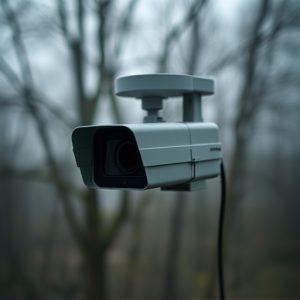Detect Hidden Cameras: Smartphone Apps & AI Techniques for Safety
Hidden cameras, disguised as everyday objects like smoke detectors or sunglasses, pose a threat to p…….
Hidden cameras, disguised as everyday objects like smoke detectors or sunglasses, pose a threat to privacy. To counter this, innovative apps leverage AI and UV light technology to detect "most realistic-looking security decoys." These solutions empower users to identify and protect against covert surveillance in personal and professional spaces.
Hidden cameras can be subtle, disguised as everyday objects—a critical concern in an era where privacy is a paramount. This article guides you through effective smartphone-based methods to uncover these clandestine devices. We explore two primary approaches: identifying security decoys and leveraging advanced AI techniques. Section one delves into understanding the most realistic-looking hidden cameras and their common placements, while subsequent sections introduce powerful smartphone apps and cutting-edge AI/UV light technologies for enhanced detection.
- Understanding Hidden Cameras and Their Placement
- Smartphone Apps for Detecting Security Decoys
- Advanced Techniques Using AI and UV Light
Understanding Hidden Cameras and Their Placement
Hidden cameras, often referred to as covert surveillance devices, are designed to capture footage discreetly, making them difficult to detect. These cameras can be placed in various locations, from everyday objects to sophisticated security decoys, blending seamlessly into their surroundings. The most realistic-looking security decoys are the ones that mimic everyday items like smoke detectors, light switches, or even potted plants. They are strategically positioned to capture sensitive information without raising suspicion.
Understanding where these hidden cameras might be located is the first step in protecting yourself from invasive surveillance. Common spots include door handles, keyholes, and window sills, taking advantage of our natural curiosity and tendency to examine these areas. With advancements in technology, these cameras can even be integrated into everyday accessories like watches or sunglasses, offering a level of subtlety that makes detection more challenging.
Smartphone Apps for Detecting Security Decoys
The rise of hidden cameras has sparked a demand for innovative solutions, and smartphone apps have emerged as powerful tools in this arena. One of the key challenges is identifying sophisticated security decoys designed to mimic everyday objects, often referred to as the most realistic-looking security decoys. Smartphone apps aim to bridge this gap by leveraging the camera and processing capabilities of modern smartphones.
These applications employ advanced image recognition algorithms to scan for unusual patterns or anomalies in real-time video feeds. By analyzing the visual data, the apps can detect potential hidden cameras disguised as common household items or electronic devices. The result is a user-friendly interface that provides alerts and even pinpoints the location of these decoys, empowering individuals to take proactive measures against privacy invasion.
Advanced Techniques Using AI and UV Light
The integration of artificial intelligence (AI) and ultraviolet (UV) light technology has taken hidden camera detection to new levels, offering some of the most realistic-looking security decoys on the market. AI algorithms can analyze live video feeds from smartphones with remarkable accuracy, identifying patterns and anomalies that might indicate the presence of a hidden camera. These advanced systems can detect not only visual cues but also subtle changes in lighting and temperature, which are often signs of covert recording devices.
UV light detectors are another innovative tool, as many hidden cameras emit UV radiation when active. By using specialized UV flashlights or sensors integrated into smartphone apps, users can scan areas for faint UV signatures that might be invisible to the naked eye. This method is particularly effective in low-light conditions and can uncover camera lenses disguised within everyday objects like light bulbs or mirrors. The combination of AI processing and UV light technology provides a robust defense against clandestine surveillance, ensuring enhanced privacy in both personal and professional settings.
In today’s world, where technology advances rapidly, so do methods of surveillance. Understanding hidden cameras and their sophisticated decoys, such as the most realistic-looking security decoys, is paramount for privacy and safety. Smartphone apps have emerged as powerful tools to detect these covert devices, leveraging advanced sensor capabilities and user ingenuity. Additionally, AI and UV light techniques offer even more precise methods for identifying hidden cameras, ensuring individuals can protect their personal spaces effectively. By staying informed about these evolving technologies, users can proactively safeguard their privacy in an increasingly digital landscape.


